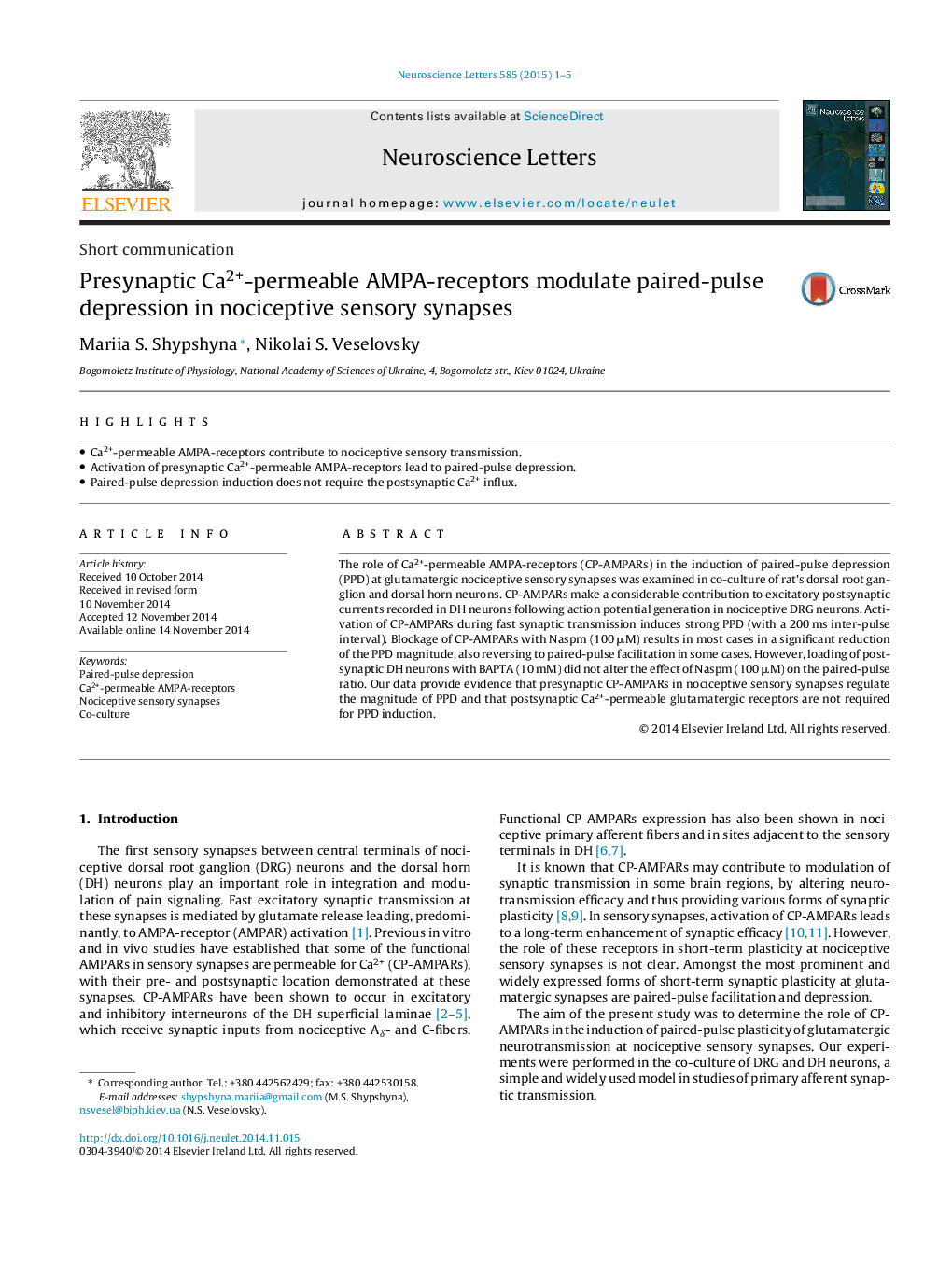| Article ID | Journal | Published Year | Pages | File Type |
|---|---|---|---|---|
| 6281145 | Neuroscience Letters | 2015 | 5 Pages |
Abstract
The role of Ca2+-permeable AMPA-receptors (CP-AMPARs) in the induction of paired-pulse depression (PPD) at glutamatergic nociceptive sensory synapses was examined in co-culture of rat's dorsal root ganglion and dorsal horn neurons. CP-AMPARs make a considerable contribution to excitatory postsynaptic currents recorded in DH neurons following action potential generation in nociceptive DRG neurons. Activation of CP-AMPARs during fast synaptic transmission induces strong PPD (with a 200 ms inter-pulse interval). Blockage of CP-AMPARs with Naspm (100 μM) results in most cases in a significant reduction of the PPD magnitude, also reversing to paired-pulse facilitation in some cases. However, loading of postsynaptic DH neurons with BAPTA (10 mM) did not alter the effect of Naspm (100 μM) on the paired-pulse ratio. Our data provide evidence that presynaptic CP-AMPARs in nociceptive sensory synapses regulate the magnitude of PPD and that postsynaptic Ca2+-permeable glutamatergic receptors are not required for PPD induction.
Keywords
Related Topics
Life Sciences
Neuroscience
Neuroscience (General)
Authors
Mariia S. Shypshyna, Nikolai S. Veselovsky,
